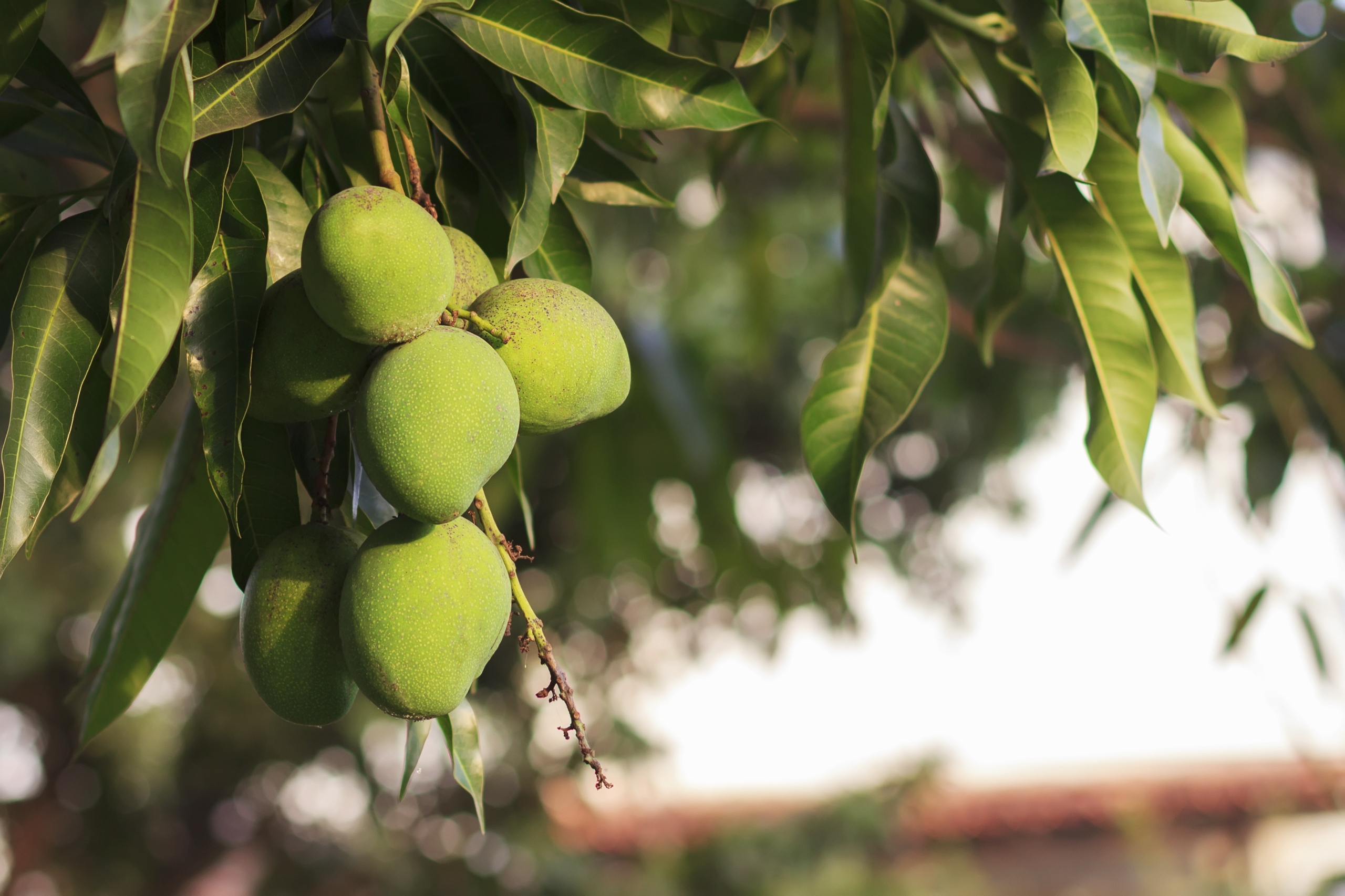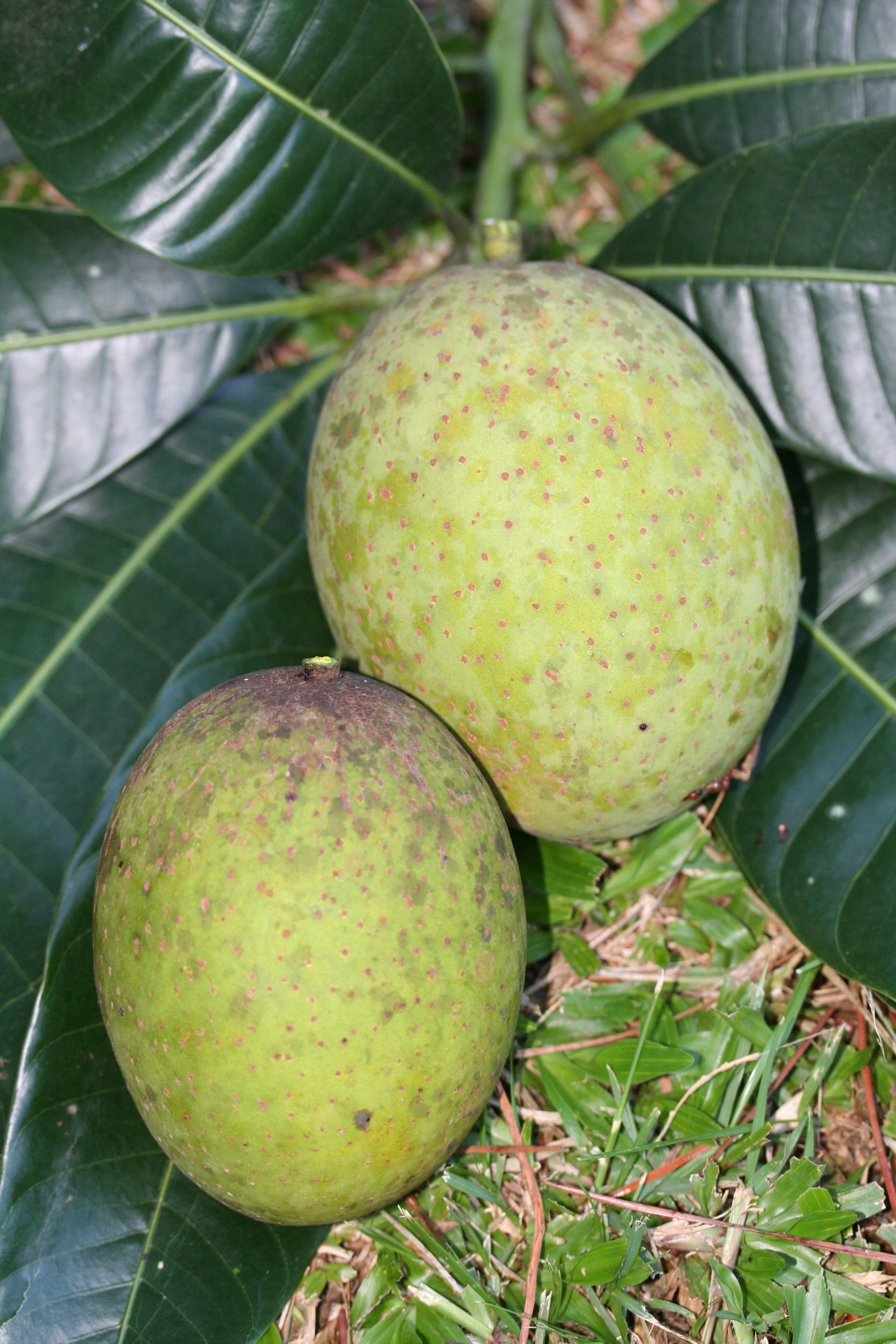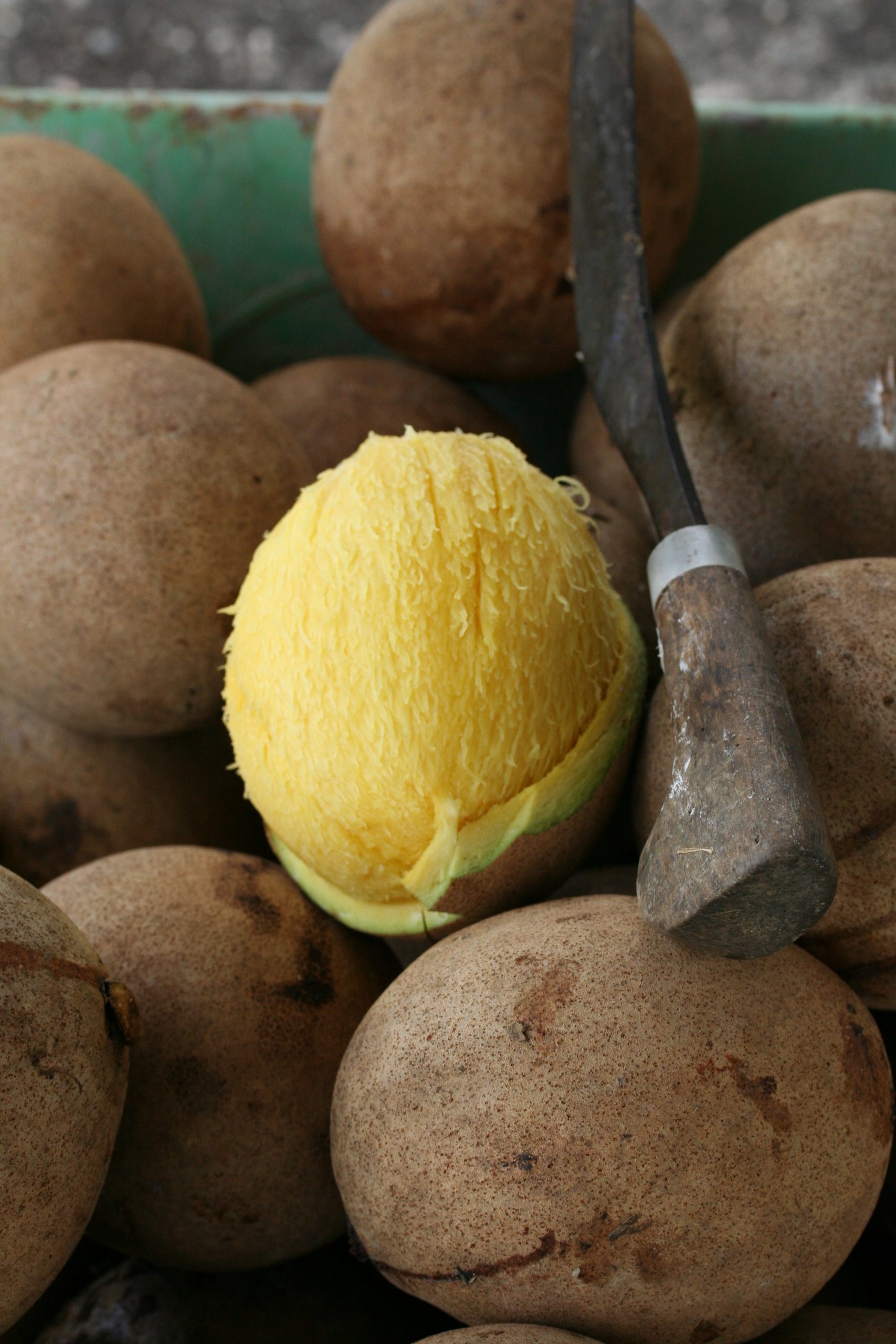Mangifera indica: The Etymology of Mango Species & Cultivar Names

No one has ever seen a non-cultivated Mangifera indica, the mango from which South Florida’s multitude of cultivars have been selected, according to Dr. Richard Campbell, Fairchild’s senior curator of tropical fruit. “There’s no record of it being collected,” he says. “Is there such a thing?”
Mangi is the Indian vernacular for “mango” and fero is a Latin word meaning to bear, according to Stearn’s Dictionary of Plant Names for Gardeners. But did Mangifera indica really originate in the foothills of the Himalayas, as its name might imply, or did it come from Vietnam or Thailand or the Malaya peninsula?
Fossil leaves of mangos have been found, and the earliest hail from northeast India, although experts cite the center of greatest diversity as western Malesia—consisting of peninsular Malaya, Borneo and Sumatra. Those areas are among the places Campbell and Dr. Noris Ledesma, Fairchild’s curator of tropical fruit, have searched for mango’s wild relatives to use in The Fairchild Farm’s mango-breeding program.
There are 69 or 70 species of Mangifera, with 26 or so producing edible fruit, according to the 1993 mango bible “The Mangoes, their Botany, Nomenclature, Horticulture and Utilization,” written by Andrew J.G.H. Kostermans and J.M. Bompard. Campbell and Ledesma are using that reference as a guide for their collecting, as it represents 40 years of fieldwork in Asia. Many wild mango species are forest dwellers, but the oil palm industry and spreading populations throughout Southeast Asia are destroying those forests, adding urgency to the collection of wild mangos and their vital germplasm. Some of the wild mangos the Fairchild scientists have collected include:
Mangifera caesia, which Campbell says may be a combination of several species. Caesia means light blue.
Mangifera pajang, which is from Borneo, Malaysia and Indonesia. Pajang was a 16th-century kingdom in Java.
Mangifera quadrifida, a Bornean species with clusters of small purple fruit; quadrifida means cut into four.
Mangifera applanata, which Campbell says probably contains genes from several species but has fruit that actually looks like a mango. The origin of M. applanata is unknown.
Mangifera foetida, the horse mango that has such a strong odor it is called the Durian Mango; foetida means foul smelling.
Fairchild’s Annual International Mango Festival sometimes includes these cultivars of Mangifera indica:
‘Angie,’ named for Angie Whitman, wife of the late Bill Whitman, a trustee of Fairchild and donor of the William F. Whitman Tropical Fruit Pavilion.
‘Julie,’ a mango of unknown origin, but widely grown in Jamaica; it is unknown where the name originated.
‘Bombay,’ another cultivar widely grown in Jamaica; this mango was taken there in the 19th century. It also is called ‘Paheri’ and was introduced to the United States by Barbour Lathrop and David Fairchild in the 1920s.
‘East Indian,’ which was taken to Jamaica by immigrants from eastern India.
‘Graham,’ a seedling of Julie that was introduced from Trinidad in 1932; is it named for Graham Fairchild, Dr. David Fairchild’s son?
‘Nam Doc Mai,’ from Thailand; the meaning of its name is unknown.
‘Cogshall,’ a Haden seedling named for a family on Pine Island.
This article was written by Georgia Tasker and originally published in the Summer 2015 issue of the Tropical Garden. Minor changes from the print version of this article were introduced to improve readability in a digital format.


